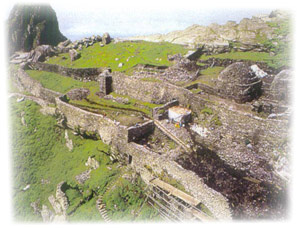It is strange that as the Catholic church is getting all this bad press how unexpected apologists are coming out of the woodwork to defend her works and history.
As someone who was educated by the Christian Brothers during the Fifties and Sixties I wish I could find it in my heart to be one of those apologists for their education record.
The mystery of how they expected to instil a love of , for example, Irish poetry in their captive students, by beating them if not word perfect in its recitation and in the recitation of its “smaointi” remains byond my powers of deduction. (And anyone who suggests that education is not about instilling love is even more cynical than I)
I know that a lot of my contempories look back at that time as an extremely happy one “sure the odd slap never did me any harm”, so I must suppose that I was just the wrong person in the wrong place.
The church was not just involved in education, the work of nuns in hospital over the centuries has been justly celebrated.
Many older nurses have assured me that there would be no trace of “hospital bugs” if the nuns were still in charge of the cleaning.
We all know the role the Catholic church played in single headedly supporting Art and Music during the many centuries from the fall of the Roman Empire to the Renaissance and, indeed, long after that, but, how many of us realise the tremendously important role they played in our food and drink.
This is the moment when I join the apologists.
Without the church would we have any food culture at all?
We only have to examine the naming of foods and drinks to see their influence on our tables.
From the amount of wonderful liqueurs called after monastic orders it is evident that not all of them obeyed the strict dietary regimes which we boast they did in Ireland.
(A fair boast it seems to me as it would be hard to reconcile the monastic existence in a beehive hut on Skellig Micheal with the invention of Benedictine.
I am quite sure that climbing down that particular path after a few liqueur glasses full would have been out of the question.)

The Beehive Huts,down from which it would be foolhardy to proceed having
overindulged in Benedictine
For indeed those eponymous monks did invent Benedictine .
As did the Carthusians invent Chartreuse.
As did the Trappist nuns invent Trappistine.
The given story is that these holy people just made these delicious liqueurs as medicines.
I find it hard to believe that they didn’t sample a sip or two during the long winters evenings.
This interest leads me back to that (previously extolled) Food dictionary
“The A-Z of French Food”.
I’ve been re-reading bits of it and am amazed by what a strong role the church has played in the naming of our food.
That there was a monastic tradition in cheese making is obvious from the amount of cheeses which have religious names. Think of Pont l’Eveque, called ultimately after a bishop, the list is endless, Sts Benoit, Marcellan, Gildas, Paulin (good one that) St. Nectaire where the monks made great smelly cheeses in the Auvergne and, one of the smelliest and tastiest of all comes from Alsace: Munster, they tell us comes from the French word for a Monastery; Monastere. I suppose it had nothing whatsoever with the fact that those same monks came from the southern half of Ireland?
But it wasn’t just cheeses and liqueurs which the church fostered.
They were responsible for naming many cakes, from the very common patisserie standard the Religeuse, or the Gateau St. Honore, both elegant confections using choux pastry, to the rather more exotic Chanoinesse(a small ginger number) or the Jesuite, which was triangular like their hats.
Outside the sweets line they sway was not quite so all encompassing although there is a delicious method of preparing Cruibins, by boning, breading and grilling them which is called A la St Menehould,and Elizabeth David gives an excellent recipe for a pastry hor d’oeuvres called a Tranche St Remy which I have often made.
We mustn’t forget that our prosaically named John Dory is called St Pierre in France and carries that Saints fingerprint to justify its name.
The Coquille St Jacques interestingly enough was named for the saint long after his body had made its mysterious journey on a slab of stone from the Holy Land to Compostela.
It seems that the pilgrims wishing to partake of miraculous water in the well by his grave used to pick up the local Scallop shells to gather and drink the water. Thus the shell got associated with the pilgrims and then by back projection with the Saint himself.
The A-Z carries many more of these church related names for foods but I must stop on one that appeals to my subversive sense of humour.
It appears that there is a little choux ball of pastry, which when deep fried and sprinkled with sugar is so delicate that it is known as the Soupir de Nonne, or the Nuns Sigh, it also goes by an other name, one that shows that perhaps the church in France was not always regarded as above humour, this is the Pet de Nonne;
The Nuns Fart.

Les Pets de Nonne

Comments
The comments are closed.